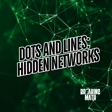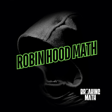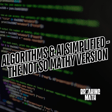Become a Creator today!Start creating today - Share your story with the world!
Start for free
00:00:00
00:00:01

85. Math, Music, Neuroscience, and Fear - an Interview with Musician Levi McClain
We are joined today by content creator Levi McClain to discuss the mathematics behind music theory, neuroscience, and human experiences such as fear as they relate to audio processing.
For a copy of the episode transcript, email us at BreakingMathPodcast@gmail.com.
For more in depth discussions on these topics and more, check out Levi's channels at:
Instagram.com/levimcclainmusic
Help Support The Podcast by clicking on the links below:
- Start YOUR podcast on ZenCastr!
Use my special link ZenCastr Discount to save 30% off your first month of any Zencastr paid plan - Visit our Patreon
Transcript
Introduction and Patreon Announcement
00:00:00
Speaker
All episodes of the Breaking Math podcast are available commercial-free on Patreon at patreon.com forward slash Breaking Math, starting at the $5 a month tier.
Mathematics in Music and Neuroscience
00:00:10
Speaker
This week, we are featuring special guest Levi McLean, who joins us to talk about the mathematics behind music, audio engineering, sound, neuroscience, and the human sense of fear. Without further ado, here's this week's episode. What makes this sound scary?
00:00:29
Speaker
Well, I was curious about this, so I built an instrument specifically designed for horror music, and then I proceeded to re-score the entirety of the 1922 horror classic, Nusferatu, in order to figure that out.
Guest Introduction: Levi McLean
00:01:03
Speaker
Without further ado, I want to introduce our guest, Levi McLean. How are you, sir? I'm doing fantastic. Thank you so much for having me on. Levi, I am... Oh, I'm sorry. I'm ecstatic to have you on. I can't believe you're here because I literally just saw your content and said, hey, have you ever thought about artificial intelligence applications to this? And you responded. Thank you.
00:01:26
Speaker
Yeah, of course. It's always great to talk about things just outside of my own discipline. So thanks for reaching out.
Episode Preparation and Structure
00:01:35
Speaker
Absolutely, absolutely. Yeah, so you have a whole lot of content. I watched almost all of it, and I tried my best to reduce it into something that we could talk about in this one episode. It's a long outline. So who knows? We may have to do this in a two-parter, but that's OK.
00:01:54
Speaker
I think that Levi and I have been on the phone preparing for this episode, I want to say, for about three and a half hours. Did you say that? That's probably correct. Yeah, that's probably about it. We've had some good times on that. Oh, yeah. That sounds weird. That's all good, man. We've had some good. No, we have had. Don't be ashamed of that. There is no shame. There is no shame in our bromance, Levi. I think it is a beautiful thing. I'm just kidding. I'm just kidding, dude. It's a beautiful union.
00:02:23
Speaker
Yes, thank you, sir. Thank you, sir. That's how a sharing brotherhood of science and knowledge. And for our listeners, I always talk about this book. I actually got Levi a copy of this book. I think you ended up buying it yourself. I owe you for that. But next time, right?
Book Discussion: 'A Brief History of Intelligence'
00:02:38
Speaker
I'll buy you a few drinks. Yeah, this is the book that we kind of base the discussion on, which is A Brief History of Intelligence by Max Bennett, where in this case, we will zero in on audio
00:02:47
Speaker
engineering. Before we dive into the content, I have a quick, awesome story that illustrates the power of audio engineering and knowledge in that area. As I mentioned earlier, I had many conversations with Levi about the science of audio engineering and machine intelligence. And what I loved is that we kept asking each other questions back and forth and had an opportunity to share our knowledge.
00:03:13
Speaker
I was on the phone with Levi when I was driving to this studio and I was walking in.
Voice Detection and AI Applications
00:03:18
Speaker
I said, hey Levi, I'm in studio now. And Levi said, I know. And I said, what? I thought, are you following me or something? Or are you tracking me or something? It left me really weirded out.
00:03:31
Speaker
And basically Levi explained, and I'll let him take over this point in a second, he basically explained that the changes in my own voice from when I was in the car to when I was walking on the street to when I walked into the studio, he could tell absolutely just based on the echoes and what he heard heard in the sound itself that freaked me out. Levi, can you tell us a little bit about that? What was it like hearing me?
00:03:54
Speaker
Yeah yeah sure so i guess it's probably something that it seems like a super power it's really not i think most audio engineers end up developing something like this because we're sitting around and we're mixing sounds all day and you know we're in studio so we get really accustomed to listening to the room of sound because that changes so much of the sound
00:04:16
Speaker
of the instruments that we play. Singing in a cathedral is going to sound vastly different than singing in a little bedroom closet. And so we've kind of developed this keen ear for being able to hear things about the room, certain qualities like
00:04:34
Speaker
I can tell generally speaking about how large a room is, just with my eyes closed if I walk into it. And then also with that, we can kind of be able to discern certain sounds of the material of the walls. What is the structure that we're in made out of? And it's just really interesting and kind of cool things that humans can do that I don't think we utilize very often.
00:04:59
Speaker
And talking to you, I immediately thought of the applications of how can we implement something like this into artificial intelligence? So would it be possible to take a microphone, put it in the middle of the room, train it on a bunch of different rooms? And then from the ambient sound of that room, could a computer, could an artificial intelligence machine learning system be able to identify qualities about that room? I think that's a really, really neat thing that I don't think has been explored yet.
00:05:28
Speaker
That is absolutely incredible. And I think you're right.
AI and Room Acoustics
00:05:32
Speaker
And that's it's funny, because these conversations about how you can garner or how you can gather information about your surroundings forces us to realize there's so much that we don't know, and that we don't know that we don't know part in that a bit of an awkward phrase here. But that's absolutely true. You and you know, you spoke of audio,
00:05:52
Speaker
Audio engineers who learn that skill over time and suddenly it just became aware that your brain could pick up patterns in these things and you learn to associate them. And with that, you suddenly have this ability to know information about your surroundings. It sends a bit of chills down my spine. I'm not going to lie, but at the same time, it's absolutely amazing.
00:06:10
Speaker
You talked about an AI application with this. And basically, so an AI, hypothetically, we can train an AI with the technology. We have microphones to pick up a wide variety of sounds that are outside of what humans can hear. And based on your own experience on what you can decipher just from the frequencies you're able to hear, as you said earlier, forgive me for just restating what you said. I like to do that. It makes me feel smart.
00:06:37
Speaker
You could learn the size of environments. You could learn properties of the materials. It's incredible. And I think the example we use is, if I choose a nice sunny day scenario, I'm not talking about a terminator scenario here, but a nice scenario where you've got a robot that is responsible for being something like a firefighter robot, and the visual spectrum is blocked from smoke or from debris,
00:07:04
Speaker
It makes you wonder what information it can get just from audio signals itself. And yeah, you brought up the possibility that there's just a lot that you can get. I don't want to go too down this rabbit hole, but I brought this up with some friends of mine who talked about this is a very developed science in areas such as sonar, like with submarines and things like that. So yeah, there's a lot of research in various areas on sound. So it's amazing.
Re-scoring 'Nosferatu': Sound and Fear
00:07:34
Speaker
Without further ado, I'd like to actually deep dive into your talk on fear. That was the video that we opened up with. And can you tell us a little bit about, tell us the story of why you decided to focus on fear? What was the process like when you put that script together, both in terms of your research and just your inspiration? And we saw you completely destroy a violin. Do you feel sorry about that at all?
00:08:04
Speaker
Not at all. The violin had it coming. So I originally started this idea when I was watching the 1920s horror film, Nusferatu, which is, it's like a knockoff, Dracula film from the 20s. It's a silent film. And I noticed that something interesting about it, which is that I didn't find it scary whatsoever. And all the people I was watching with also was like, this is just kind of boring, honestly.
00:08:34
Speaker
And then I was kind of doing some research into it and then reading a little bit about horror film history. And I came to understand that the original soundtrack for the News 4 Out 2 film was actually lost because I guess the...
00:08:50
Speaker
widow of Bram Stoker, who was the original author of the Dracula films, sued the director for Newsferatu, and there was a court order to destroy all the movies, and so basically all the copies got burned, and the original soundtrack was lost.
00:09:10
Speaker
I thought that was a really interesting opportunity to explore this idea of scary sounds in a way where I can see if I can make Newsferatu scary just through sound and also have a chance to re-score a really iconic movie.
00:09:33
Speaker
My gosh, that's incredible. That's cool. So quick question here. Have you submitted that YouTube that you made to any artistic competitions or any documentary? OK, there's got to be. And if there's not one, I will make one. I will reach out to my colleagues in the Department of Education, or I will find colleagues there, and I will insist that we met at some conference. And I'll say, you have to have an award show for educational content. Let's make it a thing. Note to self.
00:10:03
Speaker
I'll do that. Okay, so that video has a lot of neuroscience that you discuss and actually I watched the entire video and I filled up, I want to say six pages of a notebook with every term and every concept that you put in it. As you mentioned some specific mathematical concepts, I'd like to bring those up here right now. If you don't mind, I'm going to scroll on my fun outline here and we'll go right down to it.
00:10:28
Speaker
So you talk a lot about what do humans find that is pleasing and calm and what do they find that is frightening or disturbing or things that would cause our nervous system to react?
Psychoacoustics and Fear
00:10:45
Speaker
Is there a mathematical description of that kind of thing?
00:10:49
Speaker
Yeah, so the way I like to approach it is, you know, most topics in psychoacoustics are quite complex because sound is so multidimensional. So there's different ways to describe a sound and kind of all of it comes together.
00:11:06
Speaker
in its entirety to describe the sound as a whole so with that with that video and that in this project i was trying to figure out more so like what is there something specific is there any one dimension of those of this quality of the sound that contributes more so to something being frightening than than anything else and what i what i came to
00:11:29
Speaker
understand is specifically in certain types of fear, mainly quick fear. So there's quick fear and there's slow fear. We'll discuss quick fear. Maybe we can jump on the slow fear a little bit later. One of the qualities in the anatomy of a sound, if you will, is called roughness.
00:11:53
Speaker
Now, roughness is basically a description of how quickly a sound rises in volume and amplitude. And if it has a high degree of roughness, typically humans will assign that kind of sound to being scary. So in conversation,
00:12:15
Speaker
roughness will fluctuate, you know, like three to five to maybe 10 times per second. And then in something like a human scream, it's much more. So like you're talking 30, 150 times per second or something like that. And so we can kind of start to classify certain sounds mathematically through that one dimension in as scary or not scary. And so that's one part of the puzzle.
00:12:42
Speaker
It's fascinating. One of the things that I wondered about and I think you and I either talked a bit about or I wrote in the side notes on my notebook is, okay, so our ears working away, rather, our ears plus our brains and our central nervous system differentiate the frightening sound based on the hurts or the amount of amplitude changes. I think from the video you said the scream is literally between 30 and 150 hertz in a scream. It made me think about all the sounds that we hear in nature or that any
00:13:12
Speaker
any living thing would hear in nature and how unique the scream is and possibly how it evolved to be a unique signaling thing that there's danger. You know what I mean? It's just a very unique thing. I ask this because with machine learning, machine learning learns certain things based on a reward function. Well, first of all,
00:13:33
Speaker
Machines don't have a self-preservation instinct. Machines aren't worried about predators chasing it. So its reward functions are a little different. That said, whether it's machine learning or biological things, you learn things for a reason. And in the case of, say, Darwinian evolution, you learn things like the reward function is you get to keep living and produce offspring.
00:13:56
Speaker
And the punishment function, if you will, is obviously you get into endanger or die. So I don't mean to be morbid here, but that sort of explains the form and function of fear. I just found it interesting that we specifically evolved to hear this characteristic of sound. And it makes me think like,
00:14:18
Speaker
Would we have identified something else as scary if the circumstances were different? Like what is scary is a learned behavior, at least I assume, more so than an absolute, you know, this is scary, you know?
00:14:32
Speaker
Yeah. You bring up a couple of interesting points there, which is that, one, I think a lot of this understanding of what makes something sound scary, and maybe just fear in general, maybe you could apply this out to encompass a wider range here, but specifically in talking about fearful sounds. I think it comes down to anything that breaks with expectations. In bioacoustics, this would be called a nonlinearity.
00:15:00
Speaker
So sticking with the example of a human scream versus human talking, if you're in a room with a bunch of people and you're talking, and then someone screams in the back of the room, that breaks from expectation. You don't expect to hear that in a crowded room. And so everyone's attention is drawn towards it. So that's an example of a nonlinearity. It's essentially something that breaks from expectation.
00:15:25
Speaker
That's right. Yeah. And actually, I apologize. Dude, I'm sorry. Please continue. I just cut you off like a like a T bone car. Oh, you're good. You're good. Okay. Yeah, that would definitely I tried to scare you there just to show it. You know, yeah, I'm just kidding. Okay. Now in the video, I didn't even think of this. I didn't bring up a diagram. There's beautiful diagrams in your video. There is phenomenal pictures. And for that reason, maybe our listeners should just go watch your video so they can see your great diagrams.
00:15:49
Speaker
That said, there's a whole section on a fear short circuit that is based on when your brain or your ears and your nervous system hear a sound that it has identified as the trigger for a fear response. Can you walk us through the fear short circuit process in our brains?
00:16:11
Speaker
Yeah, sure. So it's essentially a five neuron acoustic startle circuit is what it's referred to. And again, this goes into the kind of fear that's immediate, the scream at the corner of the room which articulates your attention towards it.
00:16:28
Speaker
So what's basically how it works is, you know, pressure wave, sound wave will hit your ear and they'll go to from your ventral, sorry, I have a little note here, a ventral cochlear nucleus and which
00:16:45
Speaker
Is encodes intensity and temporal information so where the sound is coming from it'll then go through your lateral and this kiss to your reticular pontine nucleus and at this point that sound has articulated your eye movement and has brought your attention to the direction of the scary sound.
00:17:05
Speaker
The sound wave then travels through spinal interneurons to your motor neurons. At this point, you are fully aware of the threat and you have completely reacted. What I think is interesting about this is that it's such a fast process. It only takes about 10 milliseconds to articulate your attention towards something that's fearful.
00:17:30
Speaker
And what's interesting, I think, is when you juxtapose that with visual information. If you look at something like maybe a scary bear or someone coming at you with a knife or something morbid like that,
00:17:44
Speaker
um it's it's a much slower process even though you know light travels faster than sound it's very interesting uh because you'll you'll see the threat and then you your brain has to go through a decoding process to be able to recognize that it's a threat remember that like oh yeah bears are scary we should have avoid them and then uh and then you know has to your brain has to decode all this information to make you aware and present of the threat it's because of the visual process is a chemical one there's
00:18:14
Speaker
a chemical conversion that has to happen with light. Whereas the five neuron acoustic startle circuit is a very quick process. It happens immediately because it's a mechanical process and it only has to go through five synapses.
00:18:33
Speaker
So yeah, what I really enjoyed about this video is exactly you, man, you do a great job of breaking it down from, as you basically said earlier, the slow fear response and the fast fear response, and you broke it down systematically as an engineer. I love this.
00:18:48
Speaker
Because as an engineer, I think, oh, okay, as I'm seeing this, I see the process. I could literally code this myself if I wanted to. I could make my own robot from this. So all my engineers who are enjoying this episode, check out the video and think about how would you encode a fear response, you know, if you had to for an
00:19:07
Speaker
assignment. Another bonus assignment, here I am assigning homework, right, is how would you train machine learning to do it?
Systematic Fear Response and AI
00:19:14
Speaker
You'd have to identify a reward function that then identifies things to, shall we say, fear or avoid, or to follow and create criteria. I'm going to blaze through this part real quick because I just love all the detail here. So it basically says, there's a fear response short circuit that is described in the video includes the ventricle cochlear nucleus,
00:19:34
Speaker
which encodes intensity and location to the origin of the sound. Look at that. That's the first point. I'll say it again. Ventricle, cochlear, nucleus, and the bits of information that it includes. I shouldn't say bits. The information that it includes are intensity and location. So you have to have those two things first. But then the signal travels down and it goes to a piece called the nucleus of the lateral lemiscus. Did I pronounce that correctly?
00:20:02
Speaker
Yeah. Okay. Okay. Okay. I told you guys, I took crazy notes while I was watching this video. And then it goes to a part called the reticular pontine nucleus, where the eye movement and the attention is coordinated. This is amazing. It makes me think about how much science was done on this process to where we literally boiled it down system by system. But further, it literally talks about how information from one sense
00:20:30
Speaker
is integrated with other senses, and decisions are made in this shortcut function. Shortcuts are interesting because when you have a shortcut of information, you can make a rapid response, but you also don't have the full processing and the full decision-making potential of the entire brain. That's another conversation altogether, but we're talking about fear here, so it makes sense. And then it goes on to say...
00:20:55
Speaker
The processing comes later and to that point, that's one of the core things that I like to do whenever I'm explaining something or understanding is breaking it down so it's replicatable. I think that's so important because for me, it's like you can tell me some information, but I'm the kind of guy who's always like, but why?
00:21:16
Speaker
But you know i want to be able to build this like it's legos and i think it's really useful to explain processes in the brain whether they're audio or otherwise in that way where it's like oh well we have the ability to you know we have this idea of like oh it's a
00:21:36
Speaker
This is what we think happens. It's five neurons that does this. Well, then you can actually replicate it and you can actually test it and then have a very fine-grained understanding of certain processes in the brain. I think you could not have explained it better. And I think that's what a lot of engineers are thinking about when you have a satisfaction of your own understanding. I remember in my own life, there was a point where I realized that. I think I was inspired by Richard Feynman, actually. I don't know how many
00:22:05
Speaker
familiar you are with Feynman. He has a story in his book, Shirley, you must be joking, Mr. Feynman, where somebody just off the cuff asked him, he said, hey, when you take a strand of spaghetti, and you bend the spaghetti, why does it always break in two places and not one place? And Feynman thought about it, and he could not let go of it. And just for his own satisfaction of understanding, he obsessed with that question for a long time until he had an answer. I can give you the spoiler if you want, or I could save that for your
00:22:35
Speaker
homework. What do you guys think? No, I want to hear it. Okay. Okay. Okay. So, you know, you can look up all kinds of stuff. You talk about when you add tension to a piece of spaghetti, where is the pressure going? And where is the instability in the spaghetti strand?
00:22:53
Speaker
I need to let you know real quick, full disclosure, I had this conversation with an engineering consultant of mine. So I need to confirm this. Originally, I was thinking that it had something to do with the mathematics of nodes. And I sure as a sound engineer, you know,
00:23:10
Speaker
nodes are. A good example is if you're a child and you have a jump rope and you're spinning it, you can make one giant node. Or if you spin it at a certain frequency, it'll split into two nodes, you know what I mean? Or however many nodes. My assumption originally is it has something to do with the energy going through it as you attempt to break it and the nodes causing instability. That turned out to be wrong. I was just making it up as I went. So you got to watch out for smart sounding stuff that just made up. Lots of folks do it.
00:23:39
Speaker
according to my boss it was simply that if you put one end in a vice and you break the other end, or you bend the other end, it'll break at one point. But because you are applying pressure from your two hands, that's two points where you're applying pressure, the energy is kind of similar to the nodes in the sense that there's two fracture points.
00:24:00
Speaker
Sorry, long conversation. I wonder, we spent how long talking about that, and we were just obsessed with this problem. That's engineering for you. And that's also what I think is a human advantage, is that our striving for engineering isn't simply one explanation for a phenomenon. Human beings in our, I'll just go and say what we think of as our exceptionality. Maybe other, you know, creatures do this too. But
00:24:25
Speaker
our level of understanding that we strive for is that can we rebuild this phenomenon and can we describe it in with that amount of fidelity, you know, that we can recreate it. That's why I made this show in part because I want to do that with a lot of the unknowns in artificial intelligence. So yeah, we'll get onto that later.
00:24:45
Speaker
Now, once you have a systematic and kind of a scientific understanding for the fear response, you really know it very, very well.
Creating Scary Music with a Violin
00:24:55
Speaker
You can then apply your knowledge of a fear response to something really cool like making a scary movie or a soundtrack, which is exactly what you did.
00:25:04
Speaker
I wanted to ask you about some of the things that you went for specifically, like what sounds you chose, what you peppered in there, and what was your strategy in making a scary sound or scary music for this clip?
00:25:24
Speaker
Yeah, so there's a lot of ways you can go about it and having this knowledge of inputting nonlinearities basically gets you scary sounds. There's a lot of things you can do with that as a composer.
00:25:40
Speaker
So that involves some distorted sounds. And so if you distort sound, you're pushing up that quickness to get to a high amplitude. So that's the roughness quality that you're really taking advantage of. So I definitely use that, but also some composition techniques, right? Because a nonlinearity, if we think of it,
00:26:01
Speaker
If we take a step back and just think of it as breaking from expectation, we can do certain things with that. So that's where the idea with breaking the violin and turning it into this Frankenstein instrument kind of came into play. Part of that is to play on the movie a little bit because it's essentially the early horror movies. You have Dracula, you have
00:26:28
Speaker
Frankenstein in the mummy and those kind of things so it's a little bit of a harken back to that but it's also. I think plays into the soul of the music a little bit because you know like what is Dracula what is news for out to add its coral.
00:26:43
Speaker
It's a perversion of beauty, right? So it's something that's deeply human, that's been twisted into something, into some villainous monster. So to do that to a physical instrument, I think, plays on that pretty well. And what you can do then is break the instrument, rebuild it into something a little bit perverse,
00:27:08
Speaker
And then just from that, your ears are very used and accustomed to hearing a violin as it is, which is this highly engineered structure, this instrument that we've been using in Western classical music for years and years and years and years. And to hear it in this new context, your ear will automatically pick up on, oh, this sounds different. It sounds like a violin, but it's not.
00:27:35
Speaker
Newsferatu looks like a human, but he's not. And so that plays on the fear a little bit. And then, you know, we can also do certain things like play with dissonances. So that's taking chords that and, you know,
00:27:50
Speaker
adding these uh strange notes that probably shouldn't be in there in these in these interesting ways and then also like putting certain things like the melody if you put it way up high uh in an instrument you're pushing the tolerance of that given instrument and your
00:28:06
Speaker
really leaning into the fact that, oh, this is not where this instrument is usually played. So if I'm playing at the very top range of the violin, it's discomforting to play as a player, but it's also discomforting to experience as a listener because listeners, you know, we have a really adept ear at being able to intuit discomfort, you know, whether that's in music or in life. And so just playing on all of those things kind of kind of goes into the
00:28:36
Speaker
and into the mix when it came to this project. Awesome. I have a lot of fun. I just have a lot of fun with using elements that can cause fear or comfort when I'm doing my own art. It's kind of like whenever I'm designing a Halloween costume or I'm writing a script or trying to create a scary story. I don't know. It's just really fun. And one thing that I think is pretty common knowledge is you specifically said,
00:29:01
Speaker
that this part of making something scary is the subversion of expectations. But also, that is often a moving target. And what's scary in one time will then populate, that knowledge will become populated more in a, I'm sorry, I'm not saying that right. Once people become familiar with something, it has a diminishing effect on how scary it is. So I think you said in the video that when this
00:29:29
Speaker
movie first released? I think it was banned somewhere, right? What was it banned? I forget which country it was banned in. But it was, yeah, it was it was it was banned in the country. There's a bunch of reviews, you know, with these things, it's like, oh, it's a horror movie. So we assume that it's going to be scary. And so like, a lot of what I do is
00:29:49
Speaker
I usually don't trust any of my intuitions at first glance. So one of the first things I did is I went back to see about reviews at the time to see like, wait, was this, it's not scary to me now. Maybe it was never scary. So I need to double check that. So go back and check reviews and what people were saying at the time. And people thought it was very, very scary, which plays into what you're saying, because now I would say that most people
00:30:18
Speaker
would not find it as scary as maybe a modern horror movie. So you're right, the target does move. And that kind of plays into the idea that fear is more than just the immediate quick fear of a jump scare sound. And that plays into the idea of this slow fear concept. So a lot of what we find scary changes over time, over generations, as we get used to certain conventions. The idea of a Dracula has been played out
00:30:47
Speaker
so many times in so many movies that you really need to up the game in the modern era in order to kind of reclass this idea of scariness. Oh, and I just realized earlier you talked about the entire process of destroying that violin and making a Frankenstein instrument. We have that video as well. I want to put that video in before we go any further in the outline. Can we pull up the making of the Frankenstein violin?
00:31:15
Speaker
I built an entire horror instrument in order to figure out what makes something sound scary. Now, if I asked a composer, they might say it has something to do with the timbre of the instrument in concert with certain compositional techniques. Appropriately placed dissonances, stinger chords, and things to do with tension and release.
00:31:41
Speaker
An acoustician, by contrast, might examine the anatomy of a scary sound and observe a high degree of roughness in their waveform. This is an acoustic property which refers to the rate at which the amplitude of a given sound changes. A property high in not just scary sounds, but also human screams.
00:32:02
Speaker
The neuroscientist might note that some types of fearful sounds are purely mechanical process oriented and actuated by a five neuron acoustic startle circuit embedded in our brains. And the psychologist?
00:32:19
Speaker
Well, they might discuss how our relationship with fear changes as we understand ourselves and the world around us better and better through the decades, implying that some fears are of our own making. I say it's a really complex question. Perhaps a full 30-minute deep dive into the complex realm of psychoacoustics is in order. Oh, hey, and look at that. That's exactly what I did.
00:32:44
Speaker
So if that's what you're interested in, go check out my video, What Makes This Sound Scary over on my YouTube channel in the link in my bio. Hoping to get past a thousand views on this one. That would be nice. So any support helps.
00:32:57
Speaker
And that is all for part one of my interview with Levi McLean. We had so many notes that went into this episode that we realized we were forced to separate it into multiple episodes. Please join us next week at the same time on the same channel for part two of the interview with Levi McLean. We will finish talking about music theory, about neuroscience, about artificial intelligence, and the attempts to use machine learning to attempt to decipher whale language. Again, it'll be the same time, same channel next week.
00:33:27
Speaker
and that'll be part two.



















